BATTERY CARE AND MAINTENANCE
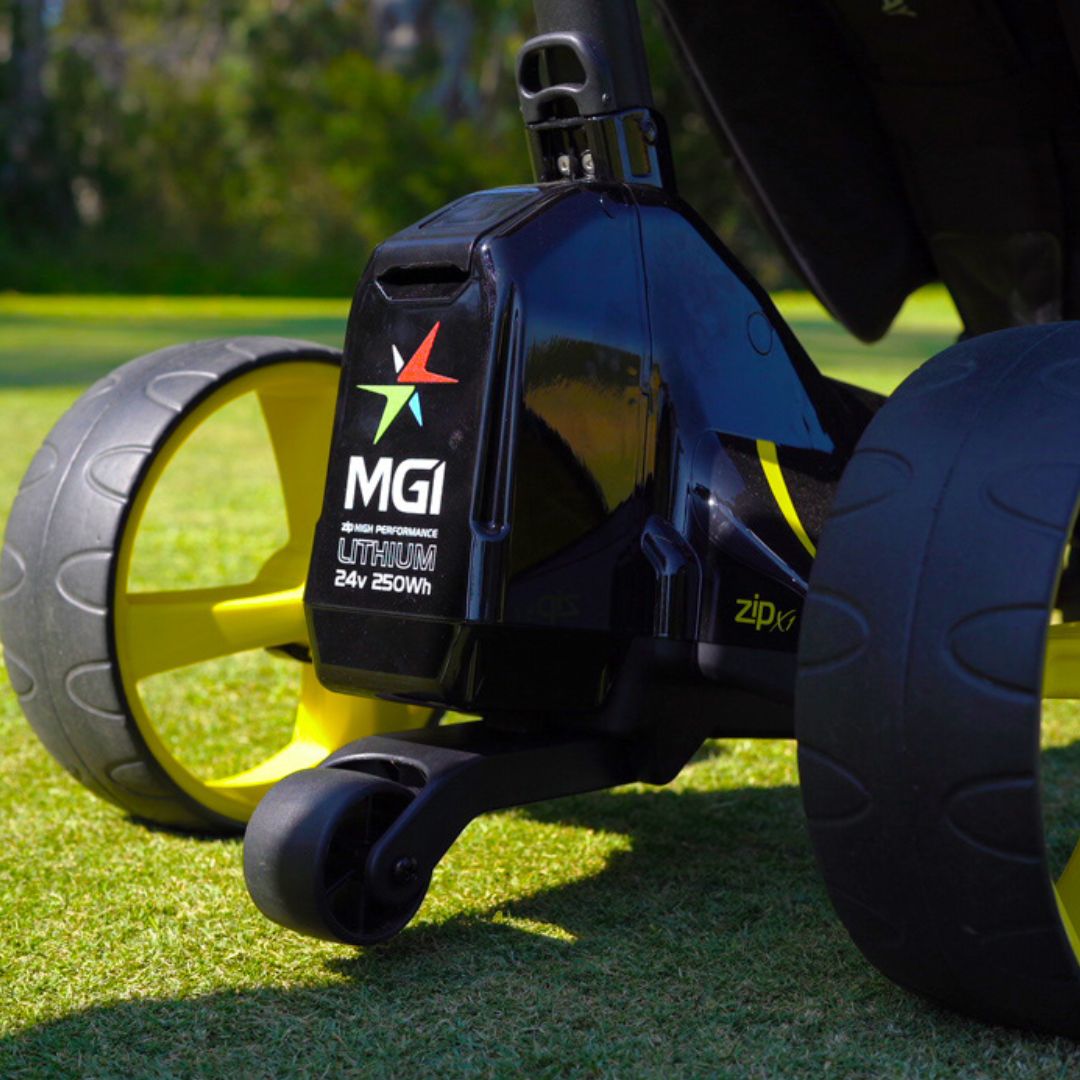
lithium batteries
Understanding and care of your MGI caddy and battery will give you peace of mind and years of enjoyment on the golf course:
Lithium batteries have many positive features, making them a popular choice for numerous applications. Their ability to recharge hundreds of times and support many sizes and shapes further enhances their versatility, powering everything from smartphones to electric vehicles and solar energy systems. They are lightweight and possess high energy density, enabling longer device runtimes and improved portability.
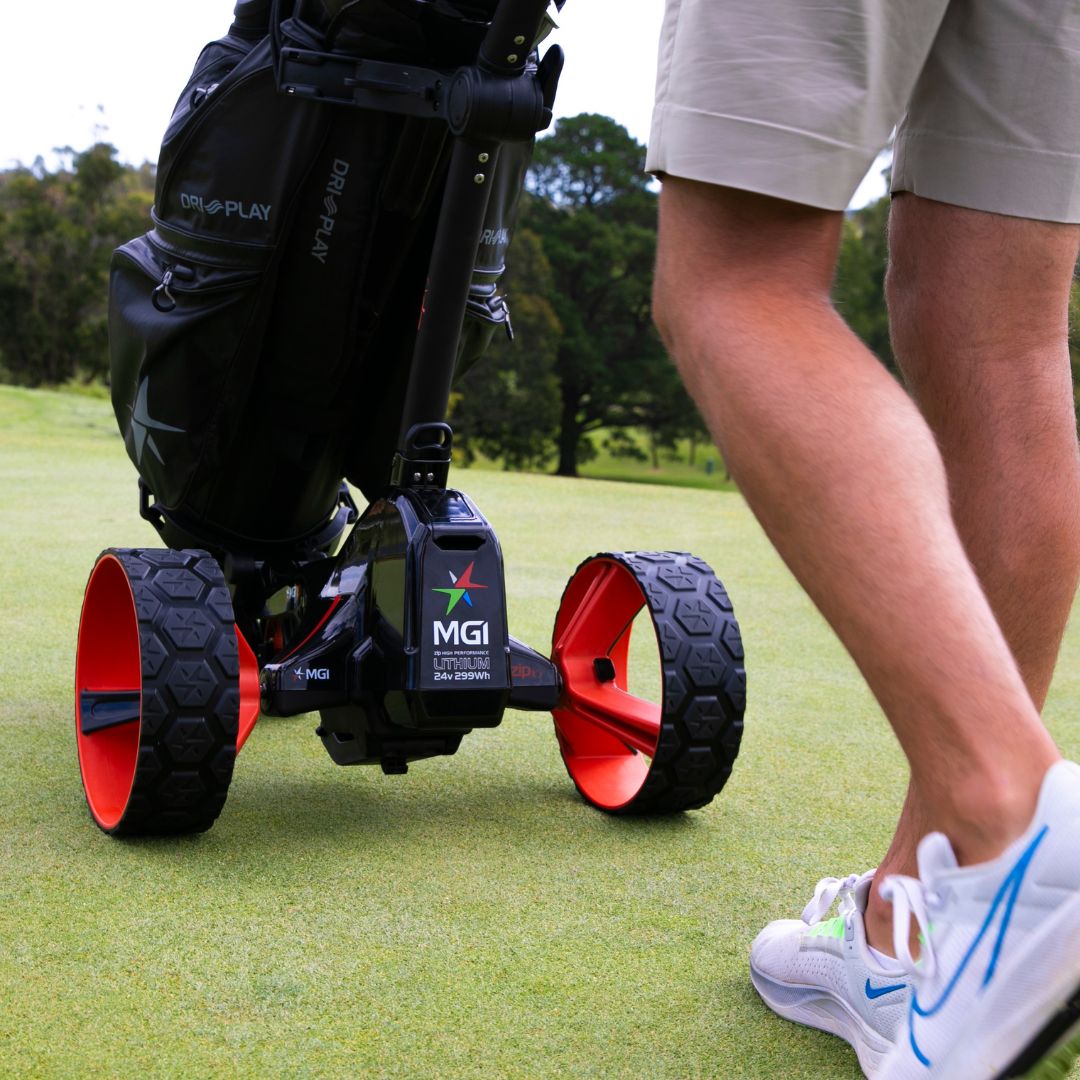
Lithium battery care
Proper care and understanding of lithium batteries is crucial. Mishandling or lack of care can lead to thermal runaway, potentially causing fires or explosions. Ensuring batteries are charged and stored at appropriate temperatures, avoiding contact with water, and avoiding extreme conditions is essential for safety. Moreover, correct charging and discharging practices can extend the battery's lifespan, reducing the need for replacements and minimising environmental impact. By taking care of lithium batteries, users can maximise their performance, reduce waste, and mitigate safety risks, making them an efficient and responsible choice for various applications.
You do not need to be worried about the safety of lithium batteries if you care for them and use them correctly.
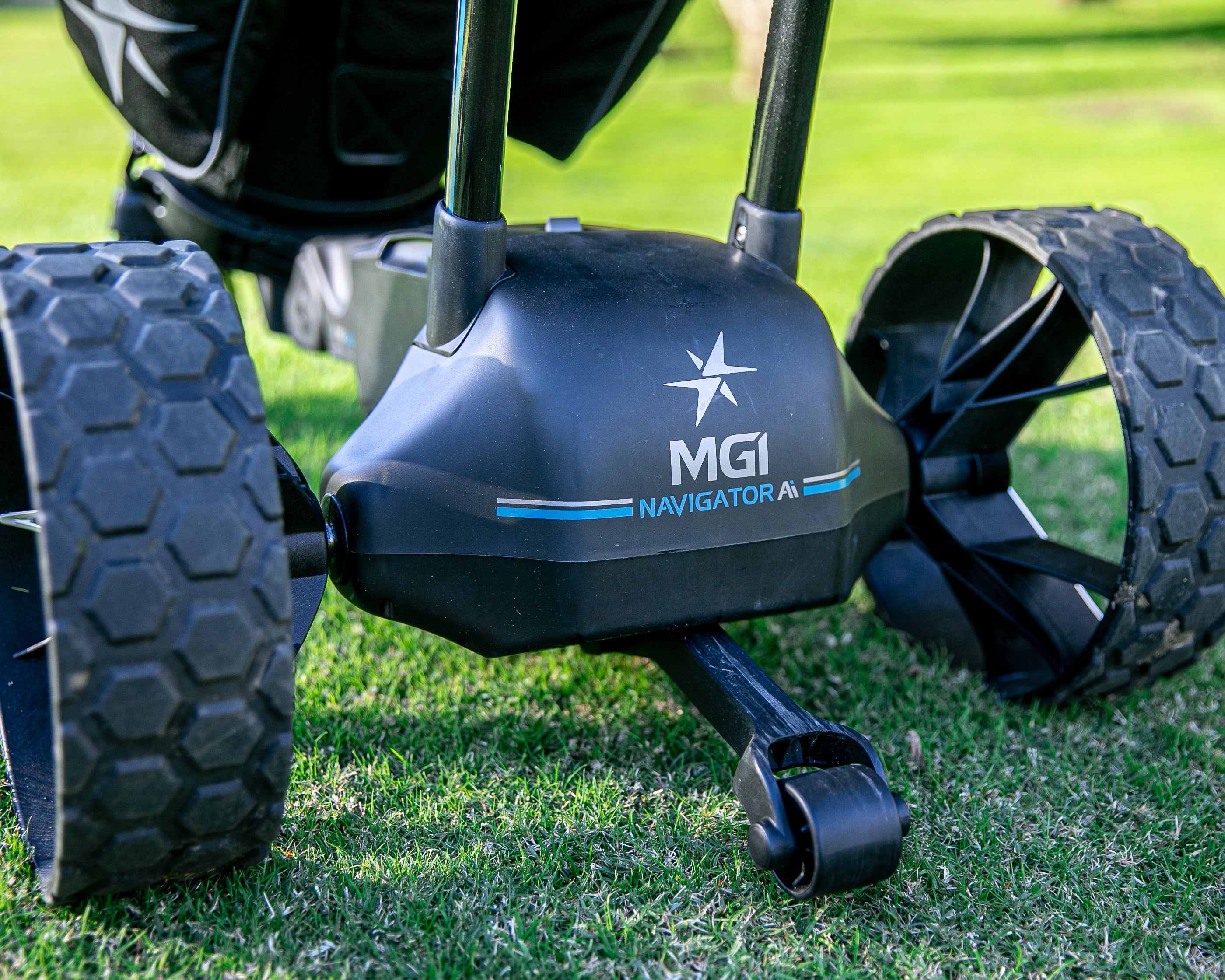
How best to care for your lithium battery
Your MGI lithium battery leads, casing and connections must be regularly inspected for damage and wear. Do not use your battery if you notice worn or damaged connections as they can cause battery fires. If you notice any damaged or wear on the battery lead, casing, and connections, please contact MGI or an Authorised MGI Service Centre for inspection and a potential repair or replacement.
We recommend cleaning away excess dirt or debris with a brush and wiping down the battery casing, carefully, with a damp cloth after playing golf. Under no circumstances clean your caddy or battery using a pressure washer, tap or hose.
When charging your lithium battery, ensure that that battery is charged under cover, preferably indoors in a well-ventilated area, on a solid floor such as concrete. Batteries must not be charged in a car, or on surfaces such as carpets or rugs.
Be aware of the surroundings where you charge the battery.
Keep the charging battery clear of items such as heaters, radiators, air conditioners, naked flame and away from rain or water.
Be sure the power connection has no faults and do not use power boards and extension leads, as sparks can cause battery fires. The battery must be charged after every use, regardless of the time used. When charging, it is recommended the ambient temperature is between 5°C – 30°C.
It is recommended that you do not leave the battery connected to the powered charger for longer than 10 hours. This is in line with new "best practice" recommendations of removing your battery off charge once it is fully charged.
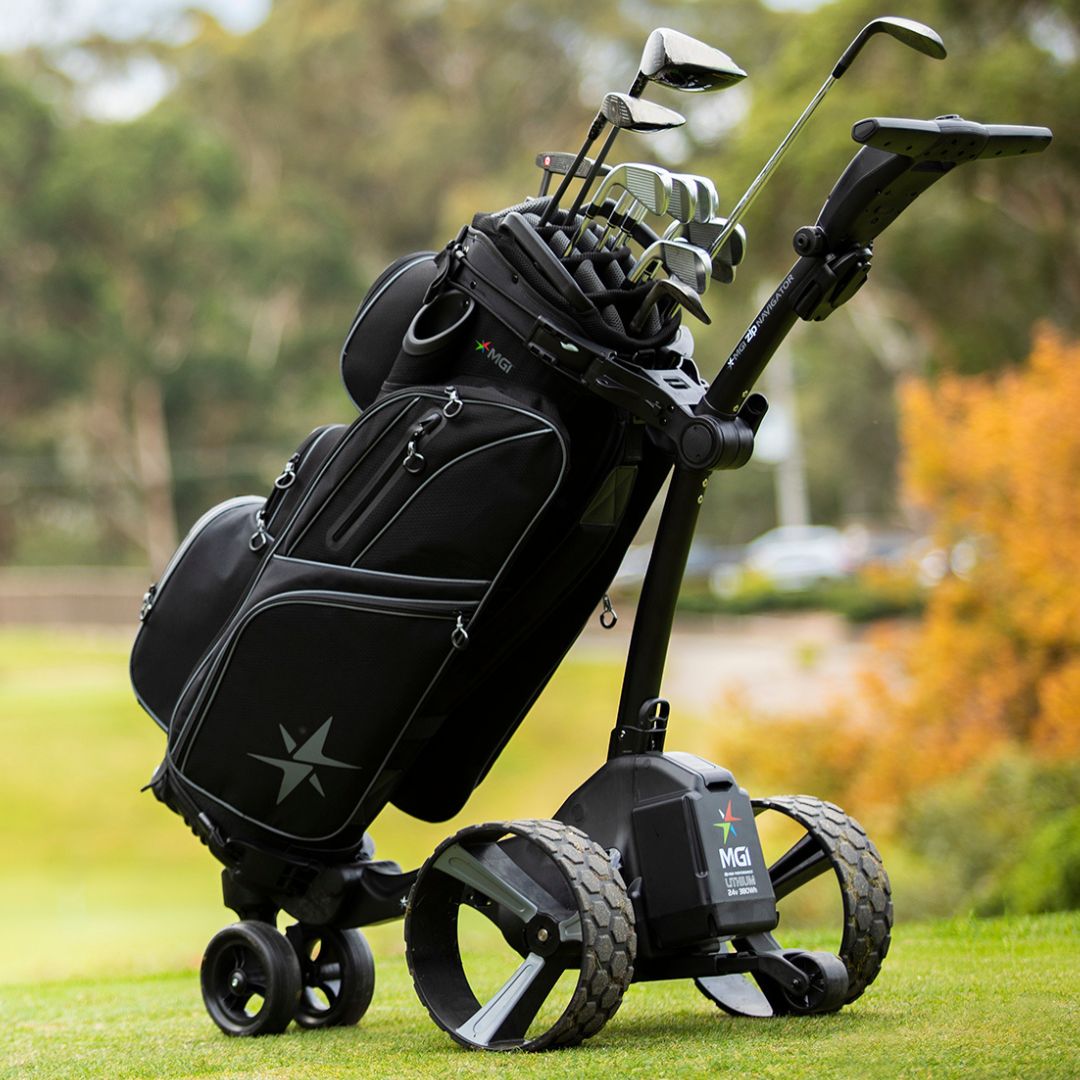
Knowing the signs of a damaged lithium battery
There are two terminals on the battery, these will engage to the caddy when the locking lever is engaged. A locking lever that is difficult to operate could indicate that the battery is damaged.
Pay attention to the plastic shell of your battery; cracks and damage to the battery housing can let water into the battery, causing a risk of fire. You may not be able to see physical damage if your lithium battery has water damage.
Newer model lithium batteries have water indicators; however, these need to be inspected by an MGI repairer. If you are unsure of the state of your battery, cease using the battery and do not charge. If in doubt, do not charge your battery. Being knowing and aware is vital to the safety of your caddy, your battery, and your surroundings. Contact MGI or an Authorized MGI Service Centre for immediate expert advice.
For the safety of our repairers, you must be honest and open about the damage that your battery and caddy may have incurred. If in doubt do not charge your battery. This can cause a hazard.
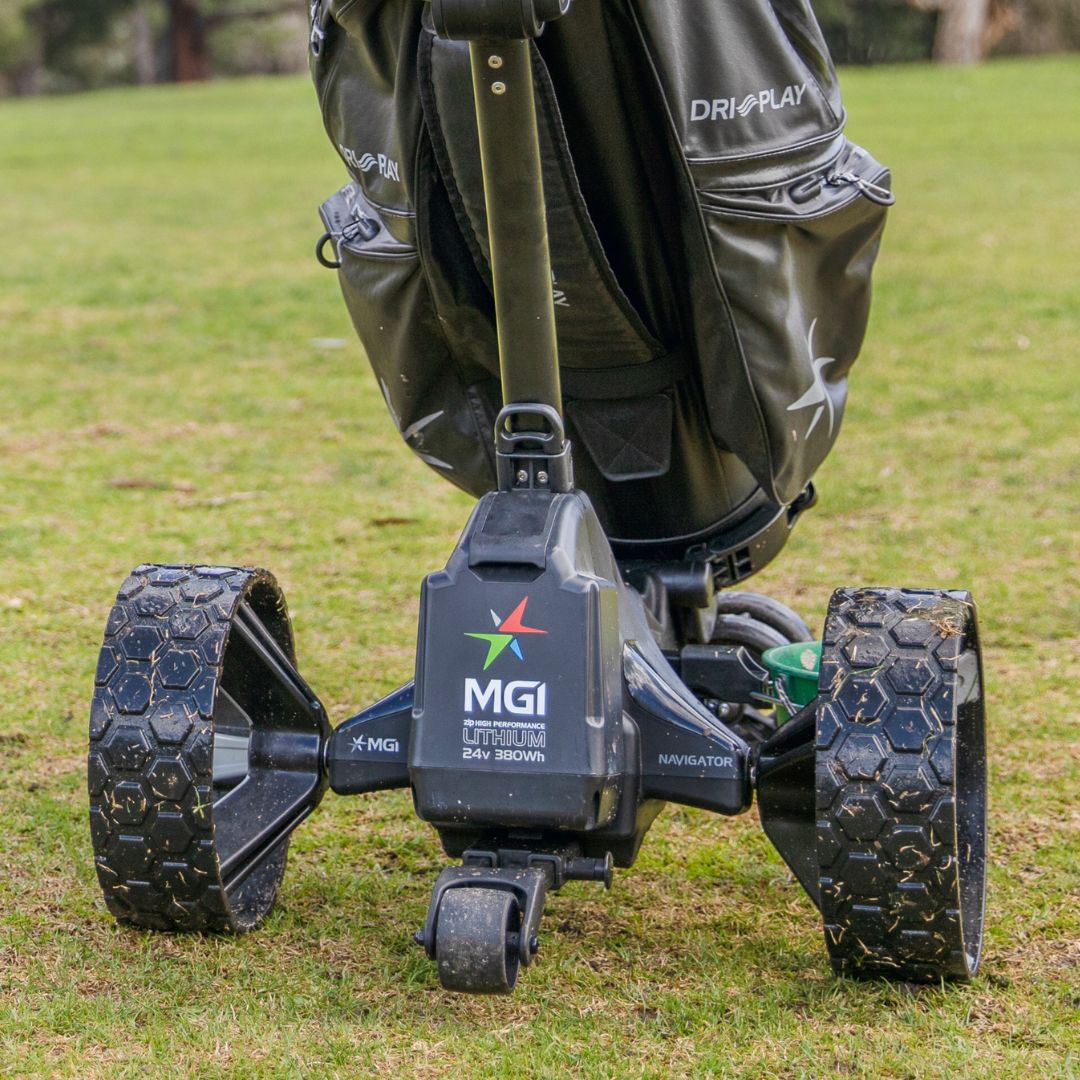
What must you do if your MGI lithium battery becomes immersed in water?
If your MGI lithium battery becomes submerged in water, [fully or partially] even for a moment, discontinue its use immediately. It will need to be disposed of appropriately. Avoid driving your caddy through deep puddles whereby the water reaches the base of the axle. MGI classifies this depth of water as a deep puddle and the battery must not be used. Whether the battery was fully or only partially submerged, please disconnect it from your caddy immediately. It cannot be reused and must not be reconnected to the caddy or charger.
Residual water and debris will remain in the terminals of the battery and subsequent connection to a charger or caddy could cause arcing and/or short-circuiting. Water-damaged lithium batteries pose a significant fire risk and must be disposed of responsibly. Please note, ingress of water or moisture into the battery and or caddy will void all stipulated warranties on the effected parts. If in doubt do not charge the battery, this can cause a hazard.
Do not attempt to open a lithium battery for any reason. Your battery is an electrical device and must never be tampered with.
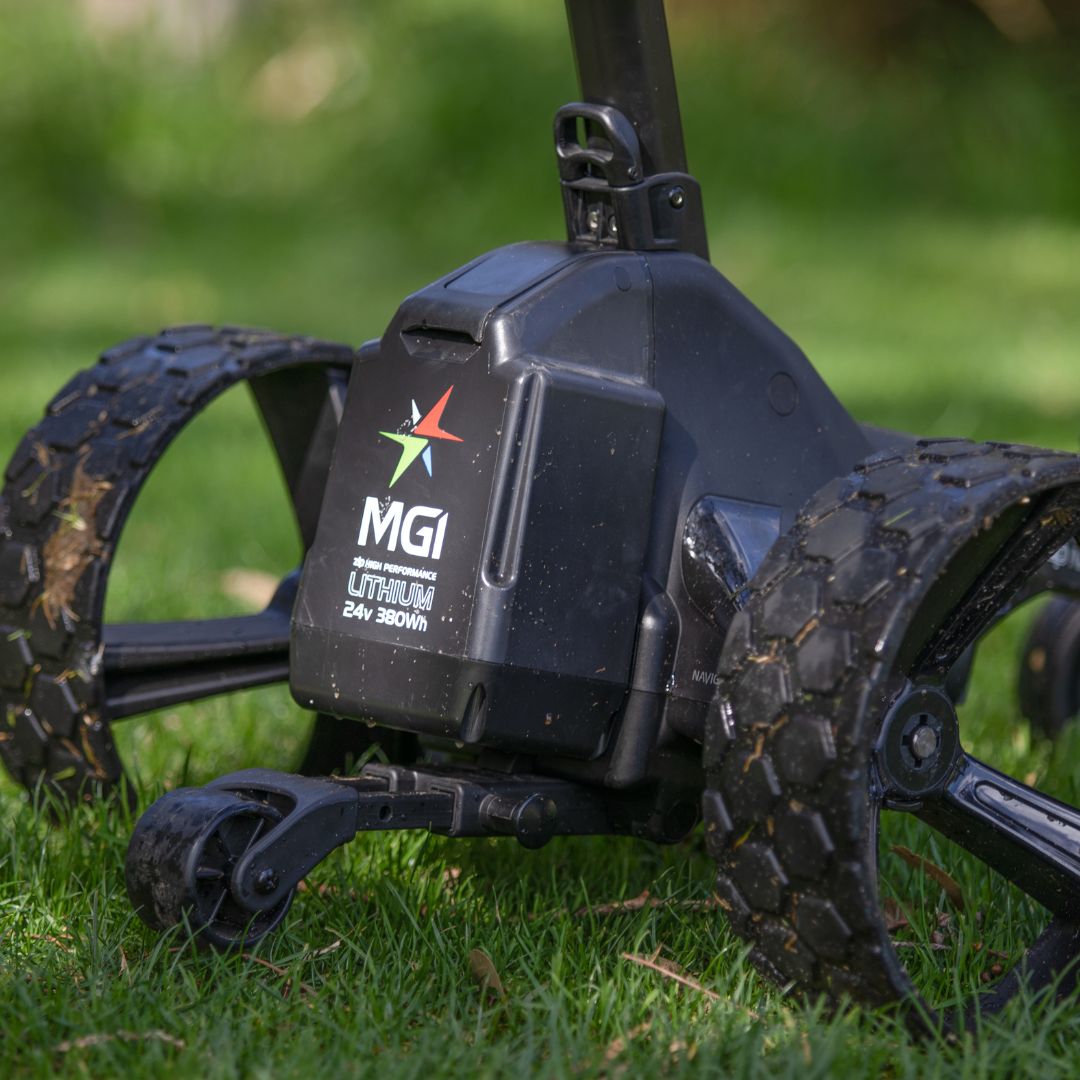
Tips for when you are around water!
MGI caddies are designed to be used in all weather conditions. MGI caddies are water resistant, but not waterproof. We recommend carrying a hand towel to wipe away any excessive water from the top box during use.
Where possible, keep your caddy on the fairway and paths and avoid boggy, muddy terrain, deep puddles and avoid using the caddy too close to a water hazard.
If your caddy and or battery becomes submerged [partially or otherwise] in water or the battery is physically damaged, under no circumstances are you to charge you battery or ever used again. It is to be disposed of responsibly.
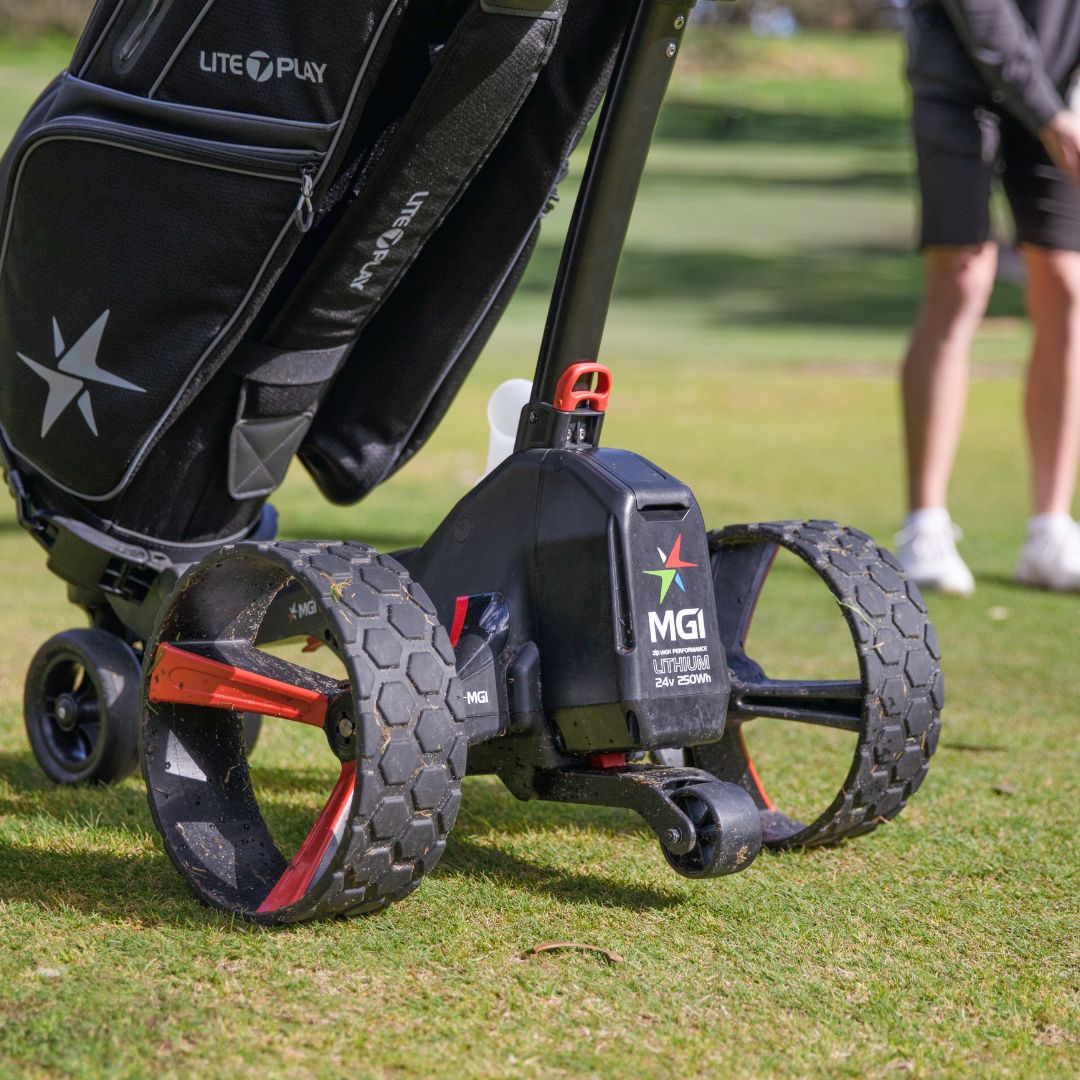
Impact battery damage
We have covered several different types of lithium battery damage that you need to be aware of, these include water damage, worn battery leads, casing, connections and an aging battery. There is also impact damage that can affect the caddy's battery.
Impact damage can be caused from dropping the battery when unloading or loading the caddy and battery from the boot of your car and it accidently drops to the ground. The caddy may have crashed into a bunker and the battery sustained damage.
To identify damage please inspect the battery thoroughly and look for any visible signs. In some cases, not all battery damage is visible, you may start to see signs of lack in performance. If you have any concerns or have visible signs of battery damage, you should contact MGI or an Authorised MGI Service Centre for immediate expert advice.
We all love our game of golf. MGI products are designed to help enhance your golfing experience. Many of our products are powered by lithium batteries which are safe and reliable if you follow our care instructions and maintenance guidelines.
lithium batteries
Understanding and care of your MGI caddy and battery will give you peace of mind and years of enjoyment on the golf course:
Lithium batteries have many positive features, making them a popular choice for numerous applications. Their ability to recharge hundreds of times and support many sizes and shapes further enhances their versatility, powering everything from smartphones to electric vehicles and solar energy systems. They are lightweight and possess high energy density, enabling longer device runtimes and improved portability.
Lithium battery care
Proper care and understanding of lithium batteries is crucial. Mishandling or lack of care can lead to thermal runaway, potentially causing fires or explosions. Ensuring batteries are charged and stored at appropriate temperatures, avoiding contact with water, and avoiding extreme conditions is essential for safety. Moreover, correct charging and discharging practices can extend the battery's lifespan, reducing the need for replacements and minimising environmental impact. By taking care of lithium batteries, users can maximise their performance, reduce waste, and mitigate safety risks, making them an efficient and responsible choice for various applications.
You do not need to be worried about the safety of lithium batteries if you care for them and use them correctly.
How best to care for your lithium battery
Your MGI lithium battery leads, casing and connections must be regularly inspected for damage and wear. Do not use your battery if you notice worn or damaged connections as they can cause battery fires. If you notice any damaged or wear on the battery lead, casing, and connections, please contact MGI or an Authorised MGI Service Centre for inspection and a potential repair or replacement.
We recommend cleaning away excess dirt or debris with a brush and wiping down the battery casing, carefully, with a damp cloth after playing golf. Under no circumstances clean your caddy or battery using a pressure washer, tap or hose.
When charging your lithium battery, ensure that that battery is charged under cover, preferably indoors in a well-ventilated area, on a solid floor such as concrete. Batteries must not be charged in a car, or on surfaces such as carpets or rugs.
Be aware of the surroundings where you charge the battery.
Keep the charging battery clear of items such as heaters, radiators, air conditioners, naked flame and away from rain or water.
Be sure the power connection has no faults and do not use power boards and extension leads, as sparks can cause battery fires. The battery must be charged after every use, regardless of the time used. When charging, it is recommended the ambient temperature is between 5°C – 30°C.
It is recommended that you do not leave the battery connected to the powered charger for longer than 10 hours. This is in line with new "best practice" recommendations of removing your battery off charge once it is fully charged.
Knowing the signs of a damaged lithium battery
There are two terminals on the battery, these will engage to the caddy when the locking lever is engaged. A locking lever that is difficult to operate could indicate that the battery is damaged.
Pay attention to the plastic shell of your battery; cracks and damage to the battery housing can let water into the battery, causing a risk of fire. You may not be able to see physical damage if your lithium battery has water damage.
Newer model lithium batteries have water indicators; however, these need to be inspected by an MGI repairer. If you are unsure of the state of your battery, cease using the battery and do not charge. If in doubt, do not charge your battery. Being knowing and aware is vital to the safety of your caddy, your battery, and your surroundings. Contact MGI or an Authorized MGI Service Centre for immediate expert advice.
For the safety of our repairers, you must be honest and open about the damage that your battery and caddy may have incurred. If in doubt do not charge your battery. This can cause a hazard.
What must you do if your MGI lithium battery becomes immersed in water?
If your MGI lithium battery becomes submerged in water, [fully or partially] even for a moment, discontinue its use immediately. It will need to be disposed of appropriately. Avoid driving your caddy through deep puddles whereby the water reaches the base of the axle. MGI classifies this depth of water as a deep puddle and the battery must not be used. Whether the battery was fully or only partially submerged, please disconnect it from your caddy immediately. It cannot be reused and must not be reconnected to the caddy or charger.
Residual water and debris will remain in the terminals of the battery and subsequent connection to a charger or caddy could cause arcing and/or short-circuiting. Water-damaged lithium batteries pose a significant fire risk and must be disposed of responsibly. Please note, ingress of water or moisture into the battery and or caddy will void all stipulated warranties on the effected parts. If in doubt do not charge the battery, this can cause a hazard.
Do not attempt to open a lithium battery for any reason. Your battery is an electrical device and must never be tampered with.
Tips for when you are around water!
MGI caddies are designed to be used in all weather conditions. MGI caddies are water resistant, but not waterproof. We recommend carrying a hand towel to wipe away any excessive water from the top box during use.
Where possible, keep your caddy on the fairway and paths and avoid boggy, muddy terrain, deep puddles and avoid using the caddy too close to a water hazard.
If your caddy and or battery becomes submerged [partially or otherwise] in water or the battery is physically damaged, under no circumstances are you to charge you battery or ever used again. It is to be disposed of responsibly.
Impact battery damage
We have covered several different types of lithium battery damage that you need to be aware of, these include water damage, worn battery leads, casing, connections and an aging battery. There is also impact damage that can affect the caddy's battery.
Impact damage can be caused from dropping the battery when unloading or loading the caddy and battery from the boot of your car and it accidently drops to the ground. The caddy may have crashed into a bunker and the battery sustained damage.
To identify damage please inspect the battery thoroughly and look for any visible signs. In some cases, not all battery damage is visible, you may start to see signs of lack in performance. If you have any concerns or have visible signs of battery damage, you should contact MGI or an Authorised MGI Service Centre for immediate expert advice.
We all love our game of golf. MGI products are designed to help enhance your golfing experience. Many of our products are powered by lithium batteries which are safe and reliable if you follow our care instructions and maintenance guidelines.







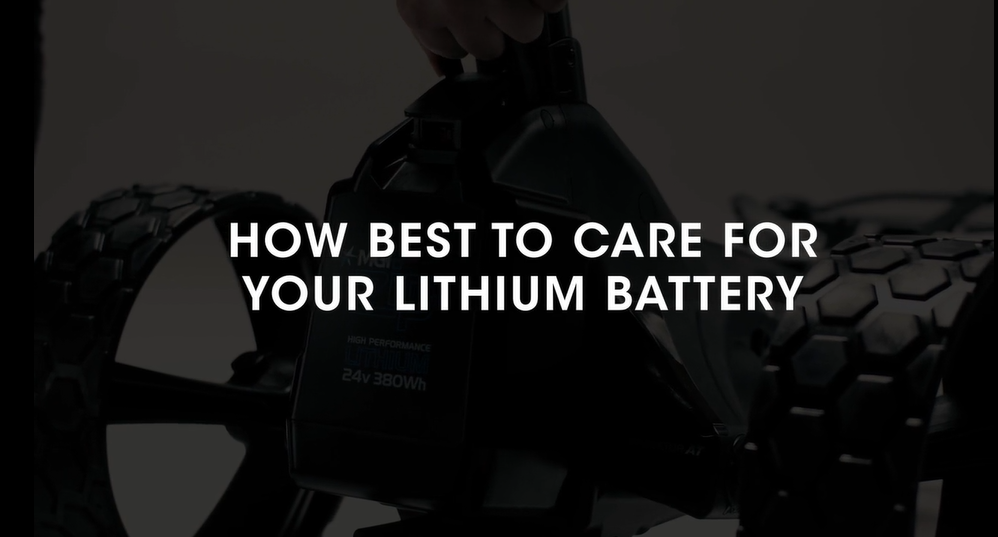
Have more questions regarding Lithium Batteries?
Contact salescanada@mgigolf.com for more information
